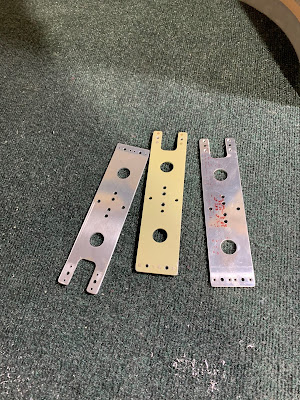RV14 Build December
EICAD
Right when I was going to order my engine Vans announced the new YIO-390-EXP119 motor for the RV14! Yeah less weight, more power, reduced drag on the cowling re-design! Booo more cost. Well I went for it, but I decided not to go for the thunderbolt version because of cost. Since it was a standard motor Lycoming would only ship it with 1 Emag and a standard Impulse Mag.
I called Emag and ordered the other Pmag, plus the lycoming gear, harness, and spark plug adaptors. I spent a ton of time on the forums trying to find the best settings for the IO-390 and Bill at EICommander was super helpful! Bill@repucci.com. Even though I wasn't installing his unit he emailed me back and forth to help me get the harness connections correct and recommend settings.
This is the wiring guide from EICAD program that I help use to understand how to wire my DB9. This drawing I found a little confusing because of the location of the numbers on the DB9. But the pin numbers are correct and just go with those.
This is how I ended up wiring mine, except I went with a 4C shielded cable and used a dedicated ground wire and not the shielding as a ground, but the pins are the same.
My wire color and pin out on the DB9
Pin 1 = N/APin 2 = Blue
Pin 3 = Green
Pin 4 = N/A
Pin 5 = Orange
Pin 6 = White
Pin 7 = N/A
Pin 8 = N/A
Pin 9 = N/A
I made one for each Pmag and plan on installing them through the firewall and behind the subpanel to make changing setting or checking settings easier, or if I want to upgrade to an EICommander.
These are instructions I found on Vans Airforce
Bills recommended way of setting up the Emad for a IO-390.
I had some trouble getting V3 from Emag. THey wouldn't come out and say it but I think they only want to send out version 4. The problem with version 4 is that you can't put in negative values for Advance shift and know that it took it correctly. It will never read a negative value when you restart to check, V3 will.
Version 3 to check the changes are hard to find unless you know someone with it. I found it web.archive.org and searching around, but this might help.
I make the changes with V4 then check them with V3, take a screen shot so I know for the future.
EICAD 1.5 Man Hours

































































